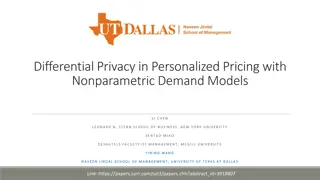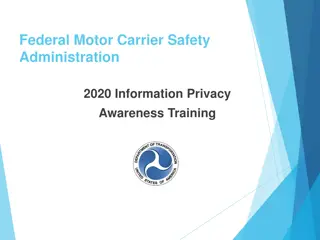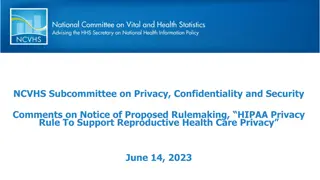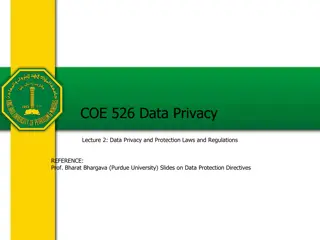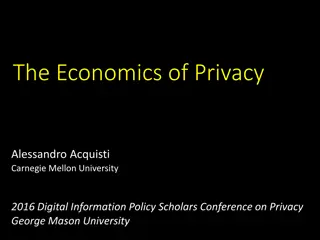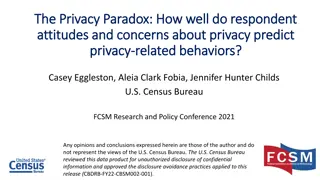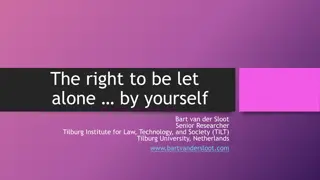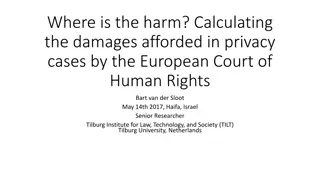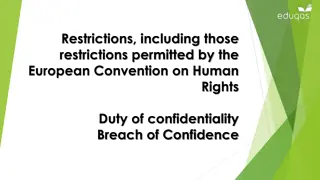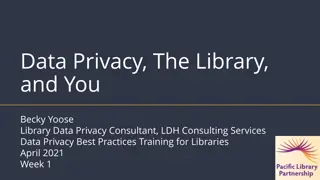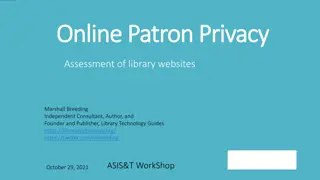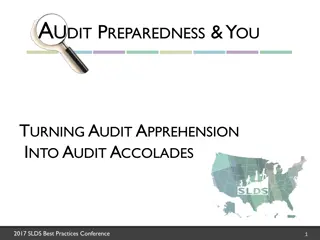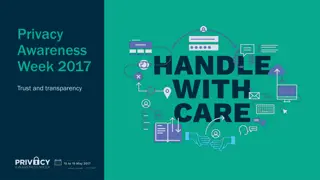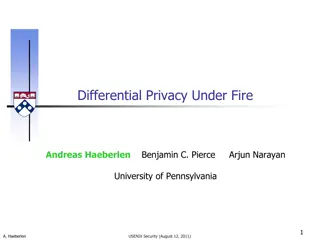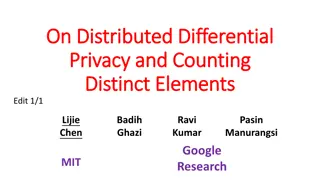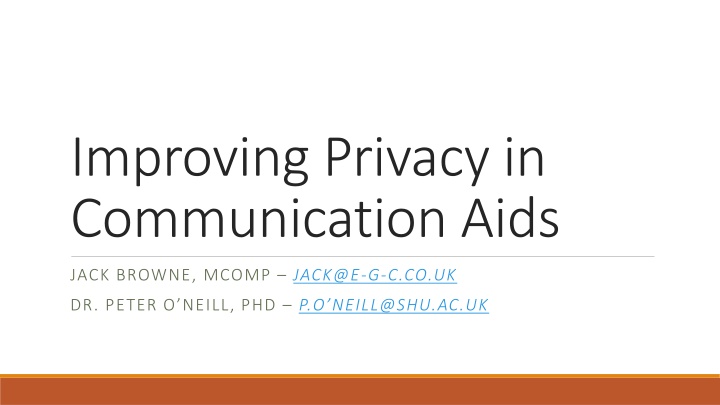
Enhancing Communication Aid Privacy: A Deep Dive into Security Measures
Explore how Jack Browne and Dr. Peter O'Neill delve into improving privacy in communication aids, focusing on the information security triad of confidentiality, integrity, and availability. They address the need for enhanced security in aids for seamless communication.
Download Presentation

Please find below an Image/Link to download the presentation.
The content on the website is provided AS IS for your information and personal use only. It may not be sold, licensed, or shared on other websites without obtaining consent from the author. If you encounter any issues during the download, it is possible that the publisher has removed the file from their server.
You are allowed to download the files provided on this website for personal or commercial use, subject to the condition that they are used lawfully. All files are the property of their respective owners.
The content on the website is provided AS IS for your information and personal use only. It may not be sold, licensed, or shared on other websites without obtaining consent from the author.
E N D
Presentation Transcript
Improving Privacy in Communication Aids JACK BROWNE, MCOMP JACK@E-G-C.CO.UK DR. PETER O NEILL, PHD P.O NEILL@SHU.AC.UK
About the authors Jack Browne Occupation: Computer and Information Security at Kilco IT Masters in Computer and Information Security at Sheffield Hallam University Specific Focus: User security & seamless security Dr. Peter O Neill Occupation: Senior Lecturer at Sheffield Hallam University PhD Title: "Enhancing the Prescription of Electronic Assistive Technology" Previous Employment: Barnsley Hospital NHS Foundation Trust and the University of Sheffield, Madhouse Software Production Ltd
Background to the research Masters level group project Combined multiple disciplines Applied the skills to an unknown environment Goal: Produce a VOCA for a specific disability profile Discipline specific research Investigate what work has been done Identify any gaps in current research Try to improve VOCAs by utilising your own skillset
Initial thoughts Highly sceptical Inverse relationship between usability and security Communication aids must focus on usability Average conversation 120-180 words/minute (Hawking 2004) Average typist 40-60 words/minute Communication aids are significantly lower However Little or no research into communication aid security Opportunity to improve security with minimal usability impact
Information Security Triad Confidentiality Protecting the information from disclosure to unauthorised parties Integrity Maintaining the consistency, accuracy, and trustworthiness of data over its entire life cycle Availability Providing a certain measure of redundancy and failover
The Triad in VOCAs Integrity Very small chance of input or output being tampered with Short data lifecycle Availability Extended batteries Redundant power supply Reliable operating systems Confidentiality Information input is unprotected Information output is unprotected
Insecure Input of Information Input screens publicly viewable Designed around usability Maximum visibility What if User wants to communicate private information Address/phone details Bank details Medical information Anyone within view of the screen can read it!
Insecure Output of Information Many VOCAs use a speaker Anyone in the room can hear the speaker Only supports 1-to-many communication What if User wants to communicate private information Address/phone details Bank details Medical information Anyone in the room can hear it!
Aims To improve privacy/confidentiality in communication aids Securing the input of information Securing the output of information Minimise impact on usability of communication aids irrelevant of disability
Input of Information - Solutions Common problem in many areas Mobile computing Public kiosks ATMs Solution: Physical Privacy Filters Applied over the screen as a film Only allow viewing from a perpendicular angle Side, top & bottom view obscured
Physical Privacy Filters Advantages Cheap to produce Easy to use Adaptable to many devices Can be retro-fitted Disadvantages Filters sometimes fall off What if the screen angle is knocked and user has physical disability?
Software Based Privacy Filters Laptop with privacy mode Dell (2008) Turned on/off instantly Cost ~ 83.50 Small in comparison to cost of advanced communication aids
Software Based Privacy Filters Advantages Can be enabled/disabled at the touch of a button Can be used with minimal effort Relatively cheap to implement Disadvantages Requires installation of additional privacy button Can t be retro-fitted to devices Overall appeared to be a robust and adaptable solution
So far Software based privacy filter Secures the input of data to devices Doesn t secure the output of data Users should be able to communicate information discretely Support 1-to-1 communication Not all communication is suitable for 1-to-many output
Just Talk V1.0 Madhouse Software Supported multiple selection layers Originally used to convey emotion Allows for volume selection on output 0.5 second hold Layer 1 Whisper 1.0 second hold Layer 2 Speak 1.5 second hold Layer 3 Shout Layers can be prioritised based on frequency Improvement: Allow whisper option to be routed to headphones
Routing Audio to Headphones Problem What if communication recipient is unable to pick up headphones? What if communication recipient is deaf? Solution Install an additional output screen Toby Churchill Lightwriter SL40 Whispering = Screen + Headphones Speaking/Shouting = Screen + Speaker Apply digital privacy filter to both input and output screens
Combination of solutions A communication aid which Allows information to be input privately Supports discrete 1-to-1 communication Supports disabilities in both users and conversation recipients Minimal impact on usability Minimal increase in cost Lessons learned are more important
Lessons Learned Usability improvements are a priority Aim for conversational speech Increase independence of users Range of use increases Result: A need for devices which support discrete communication Minimal demand at the moment It s ok to be ahead of the curve We don t need to re-invent the wheel Important not to get tunnel vision Communication involves more than words per minute Direction, emotion, independence
Thank you Any questions?

